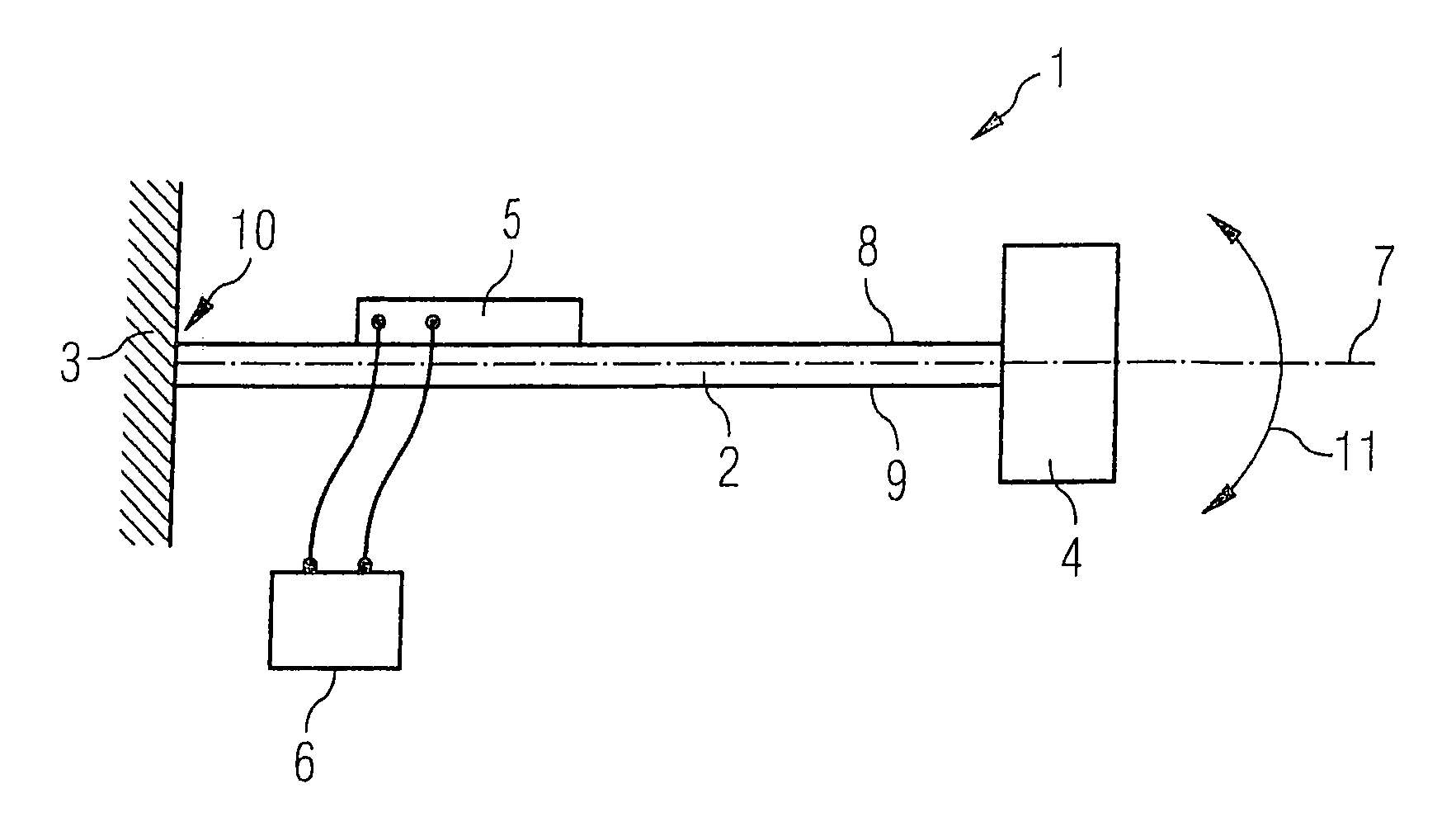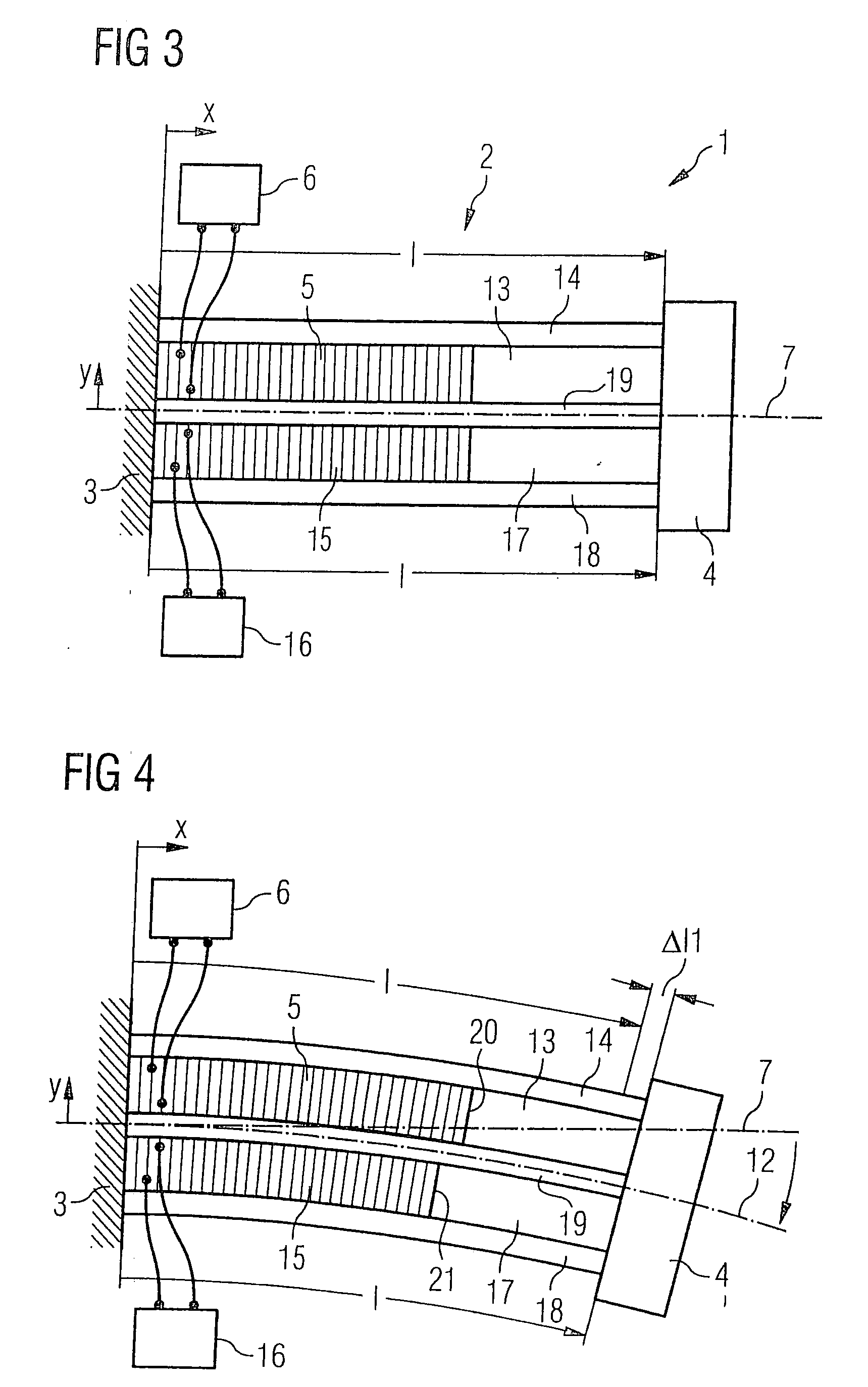Force Generator
a generator and force technology, applied in the direction of generator/motor, mechanical vibration separation, shock absorber, etc., can solve the problems of small acceleration, large coil mass, small force generation, etc., and achieve large acceleration, large vibration amplitude, and large force
- Summary
- Abstract
- Description
- Claims
- Application Information
AI Technical Summary
Benefits of technology
Problems solved by technology
Method used
Image
Examples
first embodiment
[0038]FIG. 1 schematically depicts force generator 1 according to the present invention. It comprises a flexural arm 2 that is attached at one end 10 to a structure 3, and comprises an inertial mass 4 at the other end. Structure 3 is, for example, an aircraft, a motor vehicle, a machine component, or any other component; structure 3 vibrates in an undesired fashion. To reduce these vibrations, force generator 1 is connected to structure 3 so that counter-vibrations can be deliberately introduced into structure 3 in order to reduce the overall level of the vibrations in structure 3, as explained below in greater detail.
[0039]Mounted on flexural arm 2 is an electromagnetic transducer 5, in particular a piezoelectric actuator, that is electrically connected to a driving system 6. The position of driving system 6 is arranged at a distance from flexural arm 2 and from transducer 5 such that it does not impede the movement of flexural arm 2 including transducer 5 and inertial mass 4. In t...
second embodiment
[0044]FIG. 3 depicts the force generator according to the invention. Flexural arm 2 is constructed in a layered design. It has a neutral ply 19 that extends along center line 7 of flexural arm 2. Parallel thereto, flexural arm 2 has an upper outer ply 14 and a lower outer ply 18. Arranged between upper outer ply 14 and neutral ply 19 are a first actuator constituting electromagnetic transducer 5, and an additional element 13 that is hereinafter also referred to as a spacing element, which occupies the distance between actuator 5 and inertial mass 4 as well as the distance between neutral ply 19 and upper outer ply 14. A second actuator 15, and a spacing element 17 adjoining it, are located in the same fashion between neutral ply 19 and lower outer ply 18. First actuator 5 is coupled to a driving system 6, and second actuator 15 to a driving system 16, which systems are respectively regulated as a function of sensor signals that are received from corresponding sensors for sensing the...
PUM
 Login to View More
Login to View More Abstract
Description
Claims
Application Information
 Login to View More
Login to View More - R&D
- Intellectual Property
- Life Sciences
- Materials
- Tech Scout
- Unparalleled Data Quality
- Higher Quality Content
- 60% Fewer Hallucinations
Browse by: Latest US Patents, China's latest patents, Technical Efficacy Thesaurus, Application Domain, Technology Topic, Popular Technical Reports.
© 2025 PatSnap. All rights reserved.Legal|Privacy policy|Modern Slavery Act Transparency Statement|Sitemap|About US| Contact US: help@patsnap.com



